A fresh coat of paint can transform any home into a brand-new abode. If you're hoping to avoid some of the labor that comes with painting a home using paint rollers, spray painting your house's exterior may be the perfect solution. This tutorial will help you learn how to spray paint your house's exterior so that your home looks as good as new while you spend less time on labor and more time enjoying backyard barbecues.
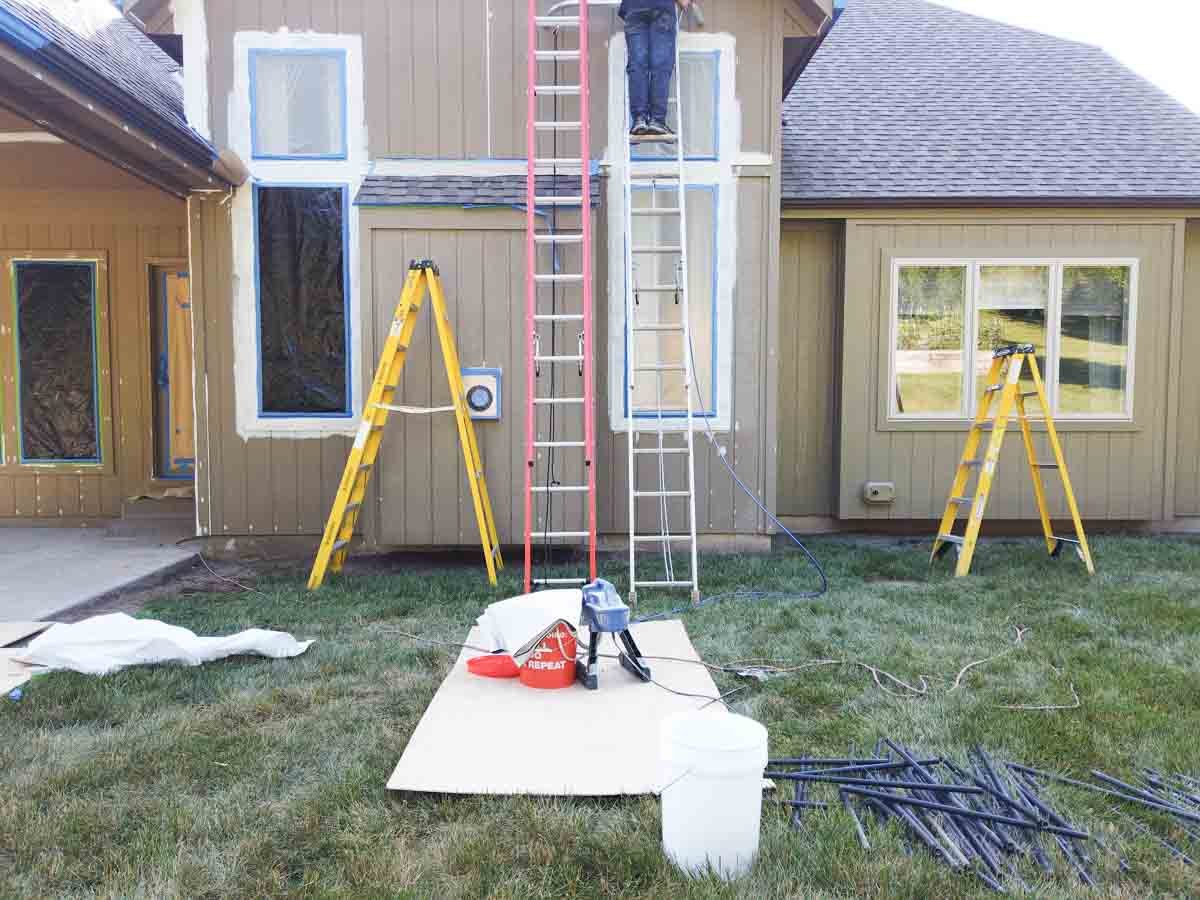
In This Post
The Advantages of DIY Spray Painting
Before diving into the details of how to spray paint your house, let's explore why choosing the DIY route is worth considering. Not only does it save you a significant chunk of money that would otherwise go towards hiring professional painters, but it also puts you in control of the project. However, it's essential to acknowledge that spray painting your home's exterior is a complex task that requires careful planning and execution. So, let's get started on the journey to transform your home.
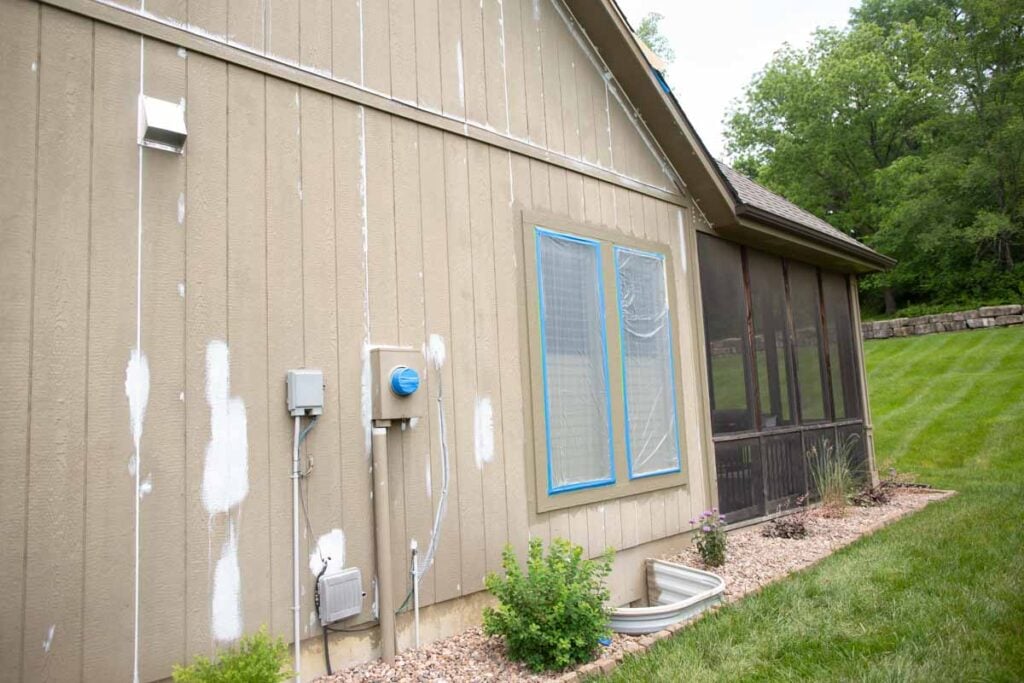
I'm going to share with you images on our own personal project so that you can see what it really takes from our experience.
Preparation is Key: A Lesson from Personal Experience
One crucial aspect of spray painting your home's exterior is preparation. It's the foundation upon which a successful paint job is built. In our own experience, we learned the importance of dedicating time to preparation. The steps we took over three weekends to complete the painting project involved meticulous prep work, and it paid off handsomely in the end.

The Essentials: Tools and Equipment
Airless Spray Painter: An Overview
First and foremost, you need the right equipment, including an airless paint sprayer. Airless sprayers work by pumping paint at very high pressures (up to 3,000 psi). They can suck paint from a large bucket (fewer refills), and the spray gun is lighter because it's not attached to the paint reservoir, as is the case with many air sprayers. Airless paint sprayers can spray both paint and finishes, and there are different spray tips for different materials.
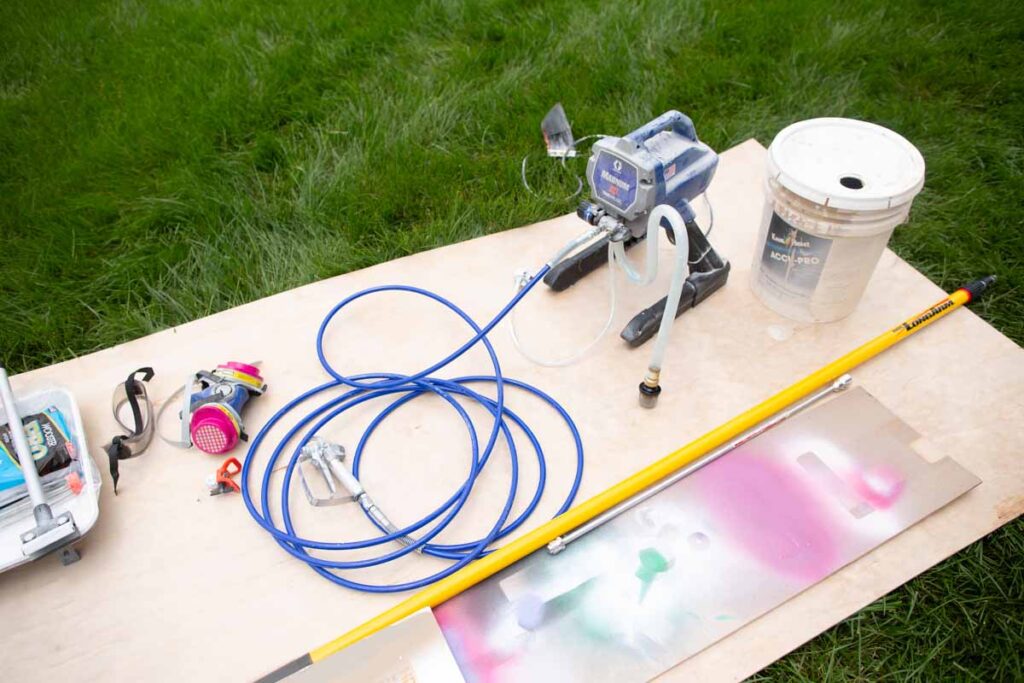
Safety and Organization
Before you start, ensure a safe and organized work area, following these general rules:
1. Tape Windows and Walls
Use painter's tape and plastic sheeting to protect windows and adjacent walls from overspray.
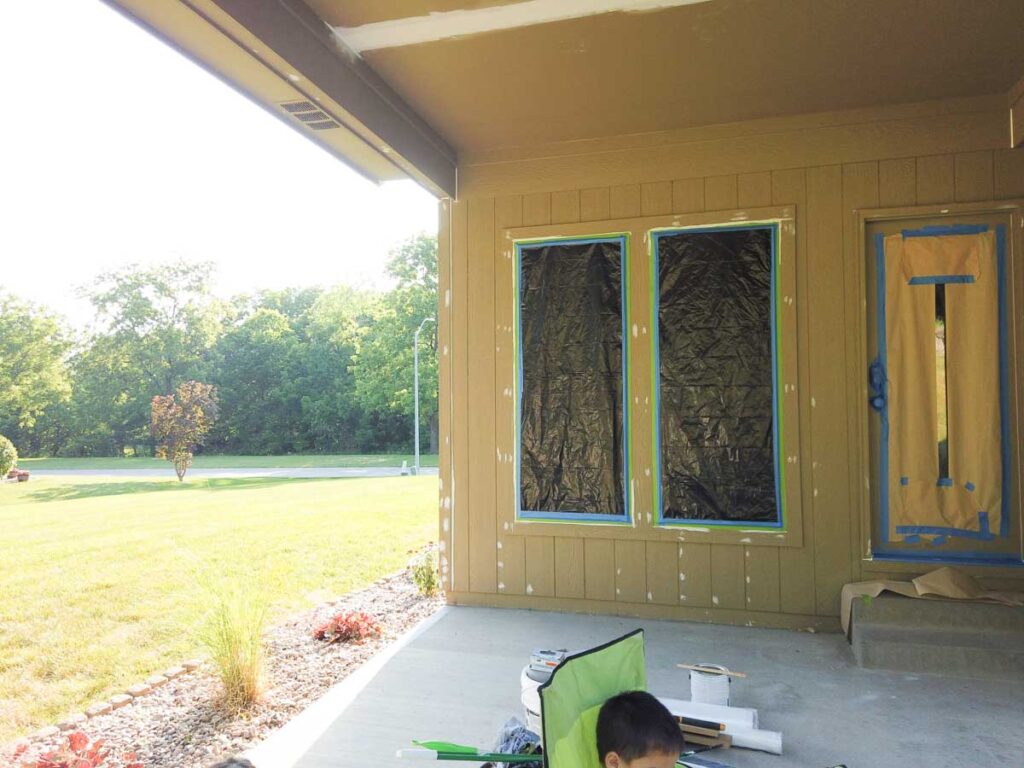
2. Keep a Lid on the Bucket
Always secure the lid on your paint bucket when not in use to prevent spills.
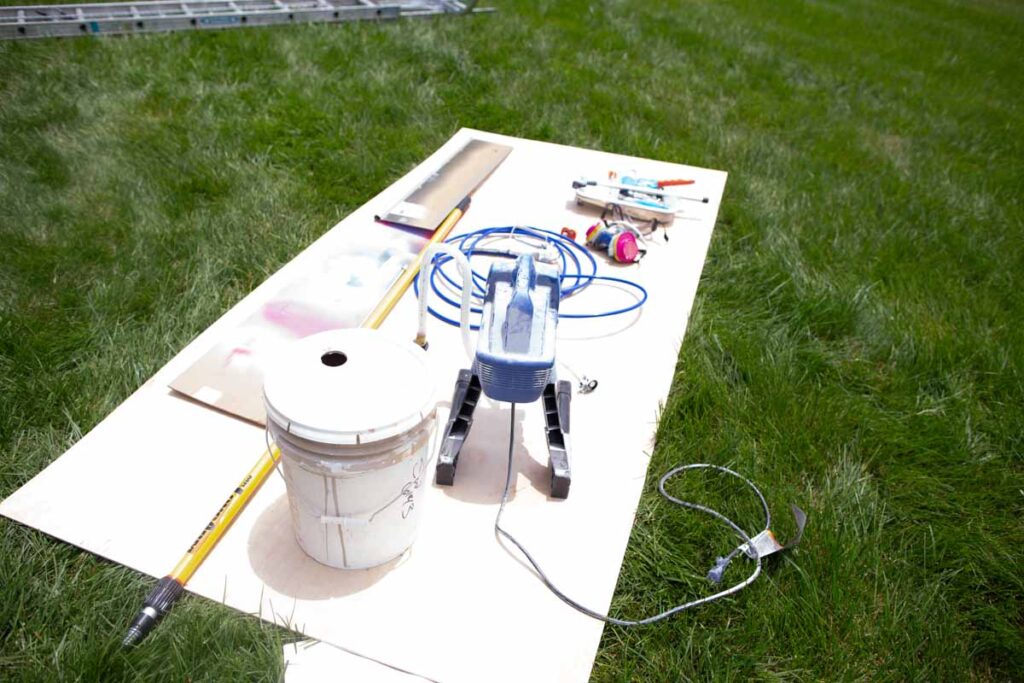
3. Keep the Gun Moving
Avoid holding the spray gun in one place for too long to achieve an even coat.
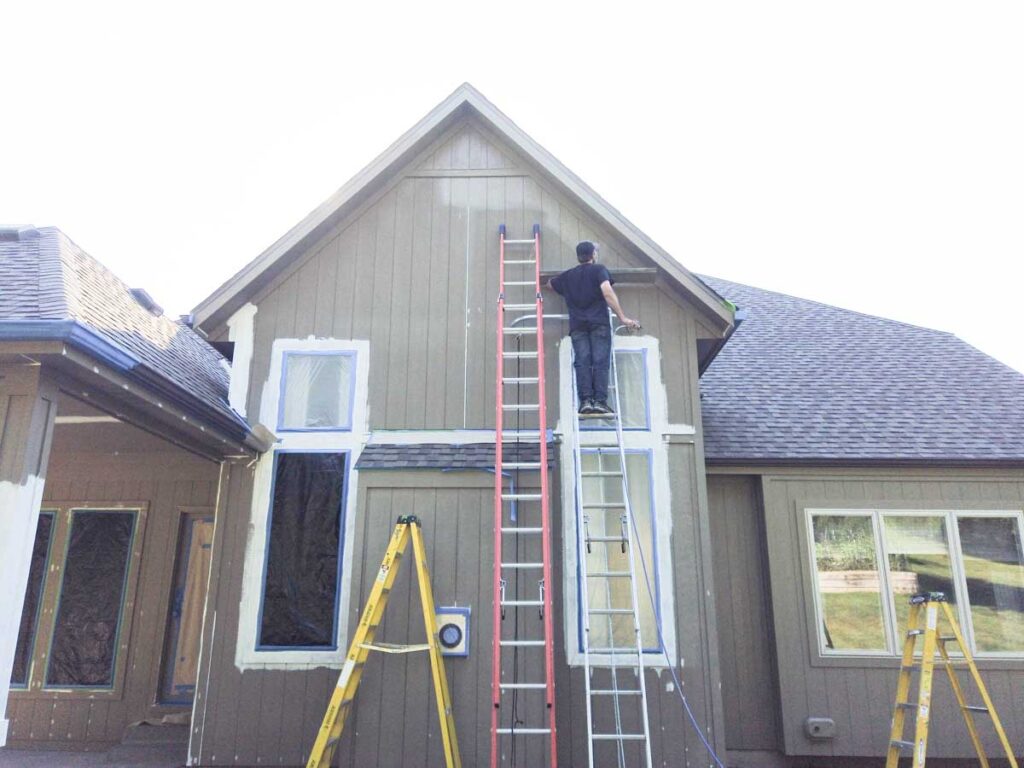
4. Backroll Then Recoat as Needed
Backrolling the painted surface ensures proper paint adhesion and consistency. Multiple coats may be required for better coverage and a flawless finish.
Time and Effort: How Long Does It Take?
A common question for DIYers is, "How long will it take to complete the project?" While it varies depending on several factors, a two-story house exterior typically takes several weekends to complete, as our personal experience showed, which took around 3 weekends without painting during the weekdays (since we had M-F, 9-5 jobs).
Tools Used
This airless sprayer is my MOST favorite sprayer that we've ever used and our family of DIYers swear by it.
- Just right for DIY Homeowners and Remodelers looking for more power and mobility when tackling larger projects
- Ideal for projects up to 10 gallons in size, allowing you tackle multiple projects every year
- Fully adjustable pressure control to give you ultimate control to spray paints or stains unthinned at any pressure
Additional Tips for Success
Here are more tips we've discovered for spray painting the exterior of your house you might find helpful.
5. Cover Surrounding Areas
Lay down drop cloths or tarps to protect your lawn, driveway, and neighboring structures from paint overspray.
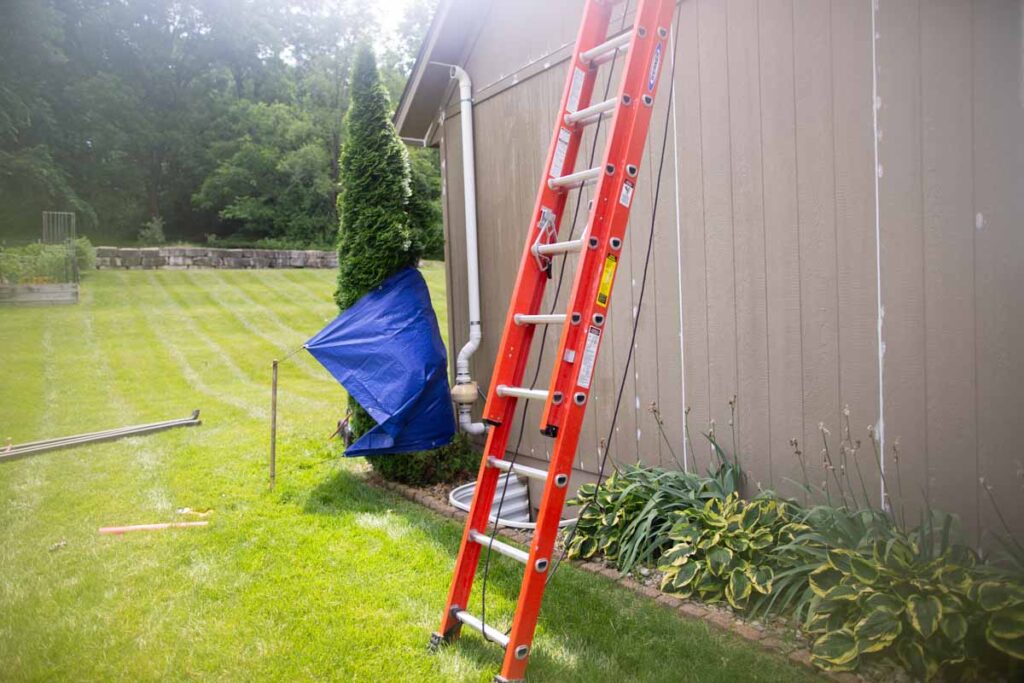
6. Remove Exterior Hardware
Take the time to remove any hardware like doorknobs, house numbers, or fixtures that could obstruct your painting efforts.
7. Clean the House
A clean surface ensures better paint adhesion. Use a pressure washer or manually clean the exterior of your house before painting to remove dirt, dust, and loose paint.
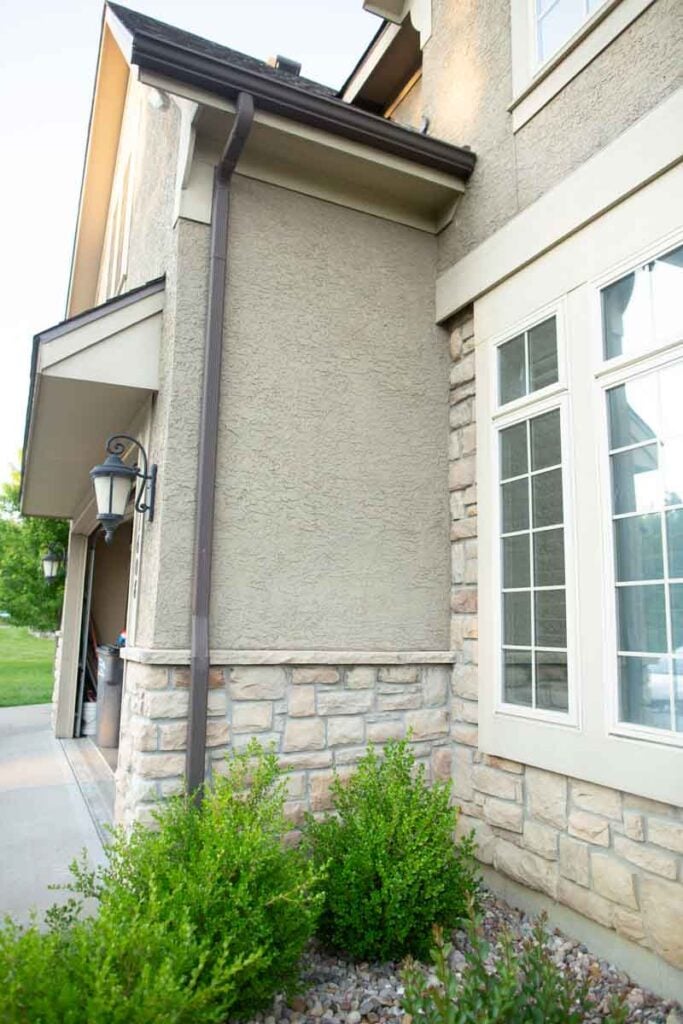
8. Remove Old Paint
If your house has existing paint that's peeling or chipping, it's crucial to remove it before applying a new coat. A scraper or power sander can be helpful for this task.
9. Cover Trim
Use painter's tape and plastic sheeting to protect any trim or areas you don't want to paint.
10. Spray Siding
Finally, you're ready to start spraying! Maintain an even distance from the surface, typically around 12-18 inches, and use steady, overlapping strokes for uniform coverage.
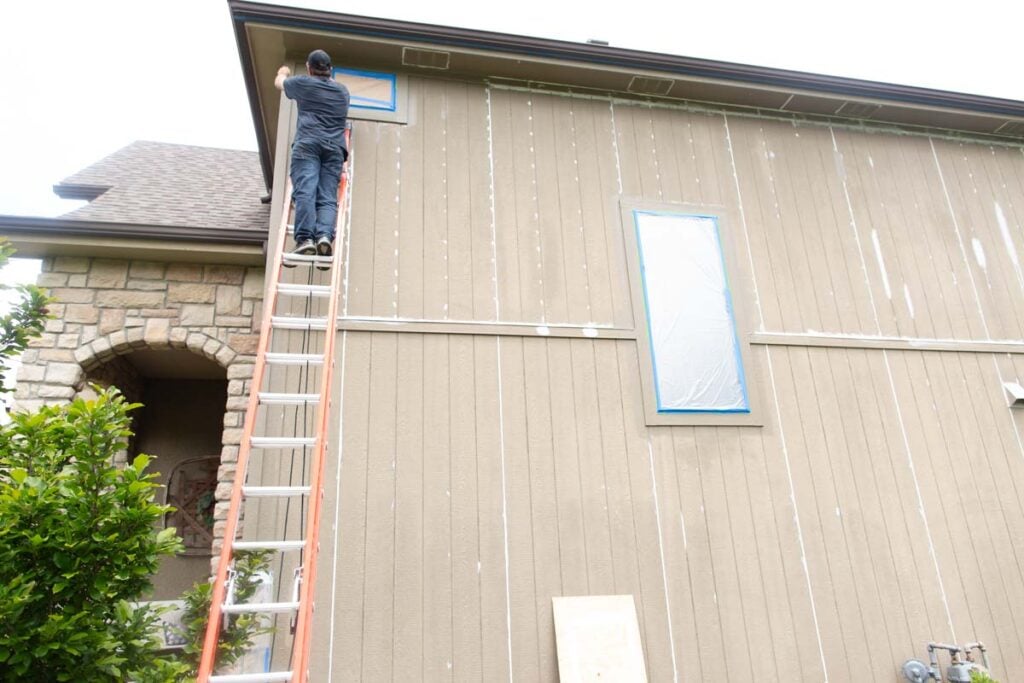
DIY vs. Hiring a Pro: Weighing the Costs
Now that you have a clear understanding of the steps involved in spray painting your home's exterior, it's essential to weigh the DIY approach against hiring professional painters. While the DIY method saves money and empowers you to oversee the project, it requires significant time, effort, and expertise. Hiring professional painters, on the other hand, offers convenience but comes at a higher cost. Consider your budget, available time, and willingness to take on the challenge when making your decision.
Personal Costs
Our home costs approximately $2,000 which included just the paint and paint brushes. Our estimate for an exterior painter was approximately $6,500.

Final Thoughts
In conclusion, learning how to spray paint your home's exterior is a rewarding endeavor that can save you money and leave your home looking refreshed and rejuvenated.

While it may be a complex task, proper preparation, the right tools, and dedication can yield professional results. Whether you choose the DIY route or opt for professional help, your home's transformation is in your hands. So, roll up your sleeves, take your time, and enjoy the process of giving your home a fresh, new look, with the right airless paint sprayer and spray equipment at your side.
More Outdoor Living Spaces and Projects to Inspire You
- Decorating a Patio on a Budget
- Garden Sprinkler System
- Outdoor Farmhouse Pots and Planters
- Outdoor Covered Living with White Wash Furniture
- Restore Outdoor Teak Furniture
- Early Spring Vegetable Garden Tips
- How to Paint Around or Behind Bushes Outdoors
- How to Hang String Lights Under Covered Patio
- How to Spray Paint a House Exterior
Outdoor DIY Projects
- How to Pressure Wash Teak Furniture
- Problems with Screened-In Patio
- Screened-In Patio vs Sunroom
- DIY Tree Ring Makeover


Leave a Reply